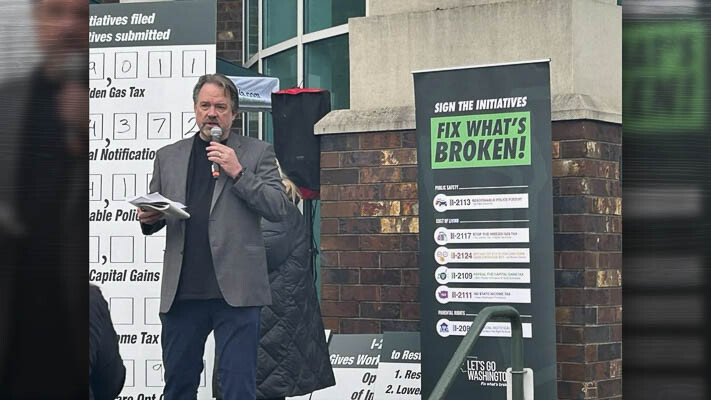
Initiative 2117, which has been certified for the ballot by the Secretary of State’s Office, would repeal the CCA’s cap and trade carbon auctions
TJ Martinell
The Center Square Washington
An initiative on the November ballot could eliminate almost all of the revenue currently diverted by the state toward electrifying the public and private transportation sector.
According to a Wednesday presentation by the Electric Vehicle Coordinating Council, 84 percent of all funding for zero emission vehicle investments comes from revenue generated by the 2021 Climate Commitment Act.
Initiative 2117, which has been certified for the ballot by the Secretary of State’s Office, would repeal the CCA’s cap and trade carbon auctions that have already generated billions in new revenue. Of that, $671 million has been dedicated to ZEV investments. Critics refer to the carbon auction as a “hidden gas tax,” arguing that it has led to increased gas prices in Washington compared to other states.
If approved by voters, it will represent one more hurdle for state efforts to electrify the transportation sector. Although the council approved a transportation electrification strategy last year, it has already acknowledged that it won’t meet its 2030 emission goals. On top of that, the state will need three million more charging ports to accommodate new EVs on the road. The cost of the ports will depend on the type, with the average cost of installation $300 to $1,500 cost for a single EV port level 1, $6,000 for single EV port level 2, and $10,000-$40,000 for DC fast charging port.
Further, they will also have to contend with the increased load on the electrical grid. Clark County recently announced a program offering $50 credit to EV owners who promise not to charge their vehicles during “peak hours.” Clark County currently has 20 EVs per 1,000 residents. The county with the highest is San Juan, with 50.7 EVs per 1,000 residents, while Garfield County has the lowest at 1.3 per 1,000 residents.
EV charging infrastructure currently makes up 33% of state funding for EV investments. Most of the EV investment spending (61%) is through the Washington State Department of Transportation. Almost half (45%) of the state spending is on EV vehicles to convert the existing public fleet.
While the latest state supplemental budget increased spending by $100 million, $130 million or 19% of approved spending has been delayed in response to I-2117.
While the remaining amount will still be spent regardless of whether voters approve I-2117 in November, state Department of Commerce’s Transportation Electrification Policy Lead Steven Hershkowitz told the Electric Vehicle Coordinating Council at its Wednesday meeting that “would not continue to roll over should that policy go away. It really is a significant chunk … of where ZEV are being funded right now.”
The council’s next meeting is May 1.
This report was first published by The Center Square Washington.
Also read:
- Clark-Cowlitz Fire Rescue to hold ‘push-in’ Ceremony for new ambulanceClark-Cowlitz Fire Rescue will perform a traditional “push-in” ceremony for its new ambulance on May 1, at 10 a.m. at the Ridgefield Fire Station located at 911 N. 65th Avenue in Ridgefield.
- A week after raucous WA GOP convention, gubernatorial candidates share thoughtsThere were dramatically different takes from the two Republican candidates for governor on how last weekend’s state party convention in Spokane went down.
- Opinion: As more states enact learning choice programs that benefit children, nearly one million families have applied to participateLiv Finne of the Washington Policy Center reports that an exciting opportunity has emerged from the damage inflicted on students from the extended COVID public school shutdowns and school curriculum controversies.
- GoFundMe spotlight: An opportunity to help pay medical bill for Napoleon the AlpacaMountain Peaks Therapy Llamas and Alpacas, based in Ridgefield, is raising funds to help pay the medical bills for Napoleon the Alpaca, who suffered a neurological event.
- Ridgefield High School claims national title in Knowledge BowlThe brilliant Ridgefield Spudders Knowledge Bowl Team shook off a tough round in the state competition, then won the national championship.
- County treasurer offers drive-through tax payment drop-off, April 29-30Clark County Treasurer Alishia Topper will be reopening the drive-through tax payment drop-off window for the last two days of the tax season.
- Vancouver gears up for busy season of paving and preserving streetsThe city of Vancouver is preparing to pave and preserve streets across 20 neighborhoods this summer.











